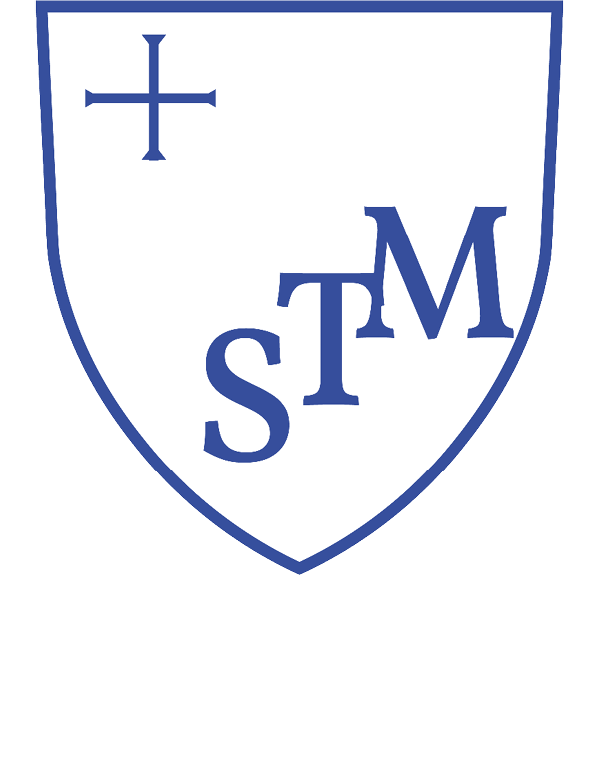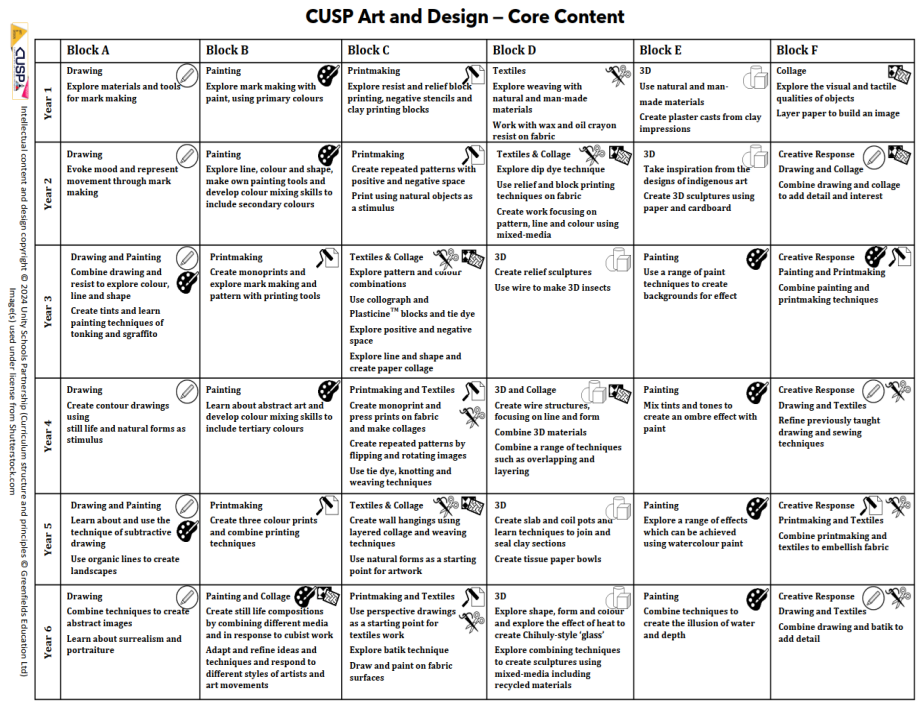Art
At our school, Art is a vibrant and expressive subject that nurtures creativity, curiosity, and confidence.
We follow the CUSP Art curriculum, which is carefully designed to build artistic knowledge and skills over time. Pupils explore a wide range of media, techniques, and artistic styles while learning about influential artists and movements. Each unit encourages children to think and work like artists—experimenting, reflecting, and refining their ideas. Through drawing, painting, sculpture, and mixed media, pupils develop visual literacy and personal expression.
CUSP Art inspires children to create with purpose and passion, celebrating individuality and imagination in every piece of work.
At St Martin's, Art is more than a subject—it’s a gateway to creativity, expression, and seeing the world through different eyes.
Big Ideas
CUSP Art is built around the concept of “Working as an Artist,” encouraging pupils to think, explore, and create like real artists.
The curriculum is underpinned by key themes such as creativity, expression, technique, and reflection.
Pupils engage with the artistic process through observation, experimentation, and evaluation.
Big ideas such as line, tone, texture, form, and colour are revisited across year groups, helping children build a deep understanding of visual language.
Through exposure to diverse artists and styles, pupils develop cultural awareness and personal voice, learning to appreciate art as a powerful form of communication and identity.
Content
The CUSP Art curriculum includes a rich variety of artistic disciplines and techniques.
Pupils explore drawing, painting, printmaking, collage, sculpture, and mixed media. Each unit introduces key concepts such as line, shape, colour, texture, and composition, while also studying influential artists, designers, and movements. Children learn to use a range of tools and materials confidently and safely. The curriculum encourages personal expression and creativity, while also developing technical skills and visual literacy. Pupils are taught to observe closely, experiment with ideas, and reflect on their work.
This broad and inclusive content ensures all children engage meaningfully with the subject.
Sequencing
CUSP Art is carefully sequenced to build knowledge and skills over time.
Each unit revisits core artistic concepts while introducing new techniques and media in a progressive way. Pupils begin with foundational skills in drawing and mark-making, then move on to more complex forms such as painting, sculpture, and mixed media. The curriculum is designed to reduce cognitive load by introducing content in manageable steps, supported by retrieval practice and reflection. Vertical progression ensures pupils deepen their understanding of artistic elements and processes year by year.
This structured sequencing helps children become confident, independent artists with a strong creative foundation.
Oracy and Vocabulary
Oracy and vocabulary are central to CUSP Art.
Each unit introduces and revisits key artistic terminology, helping pupils describe techniques, materials, and their creative choices with precision. Pupils engage in structured talk, discussing their work, giving feedback, and reflecting on artistic processes. Teachers model rich language and encourage pupils to use it in context, supporting both spoken and written communication. Vocabulary is explicitly taught and embedded through repetition and application.
Oracy activities such as critique, questioning, and storytelling help pupils develop confidence in expressing their ideas and deepen their understanding of visual language and artistic intent.
Assessment of Pupils
Assessment in CUSP Art is both formative and summative, designed to support learning and track progress.
Teachers assess pupils through observation, discussion, and evaluation of practical outcomes. Each unit includes clear expectations for knowledge and skills, guiding assessment and feedback. Pupils demonstrate their understanding through sketchbook work, final pieces, and reflective commentary. Formative assessment informs teaching and helps identify areas for support, while summative assessment captures progress over time.
Knowledge organisers and pupil book studies support retention and allow teachers to monitor development across disciplines.
This ensures all pupils are supported to achieve and grow as artists.
Reasonable Adjustments for Pupils with SEND
CUSP Art is inclusive and adaptable, ensuring pupils with SEND can access and succeed in the curriculum.
Lessons follow consistent routines and use visual aids, scaffolded tasks, and dual-coded resources to support understanding. Teachers make reasonable adjustments such as simplified instructions, adapted tools, and additional modelling. Practical tasks are broken into manageable steps, and pupils are given time to revisit key concepts. Opportunities for oral responses and collaborative work support pupils with communication needs. Assessment is used to identify barriers and tailor support.
This ensures all children can engage meaningfully with art and make progress at their own level.

